Welcome to a detailed tactical analysis of the exhilarating first leg of the Champions League quarter-final between Real Madrid and Manchester City. In this article, we will dissect the strategic maneuvers employed by both teams, exploring the formations, player movements, and tactical nuances that shaped the outcome of this highly anticipated encounter. As two giants of European football collided on the pitch, each team showcased their distinctive playing styles, offering fans a captivating display of tactical prowess. Join us as we delve into the tactical intricacies of Real Madrid vs Manchester City, unraveling the strategic decisions that influenced the course of the match.
Real Madrid
Low Build-up
Real Madrid used a 1-4-2-4 formation in the low build-up, with Vinicius Jr and Bellingham playing as strikers and Valverde and Rodrygo playing high and wide.
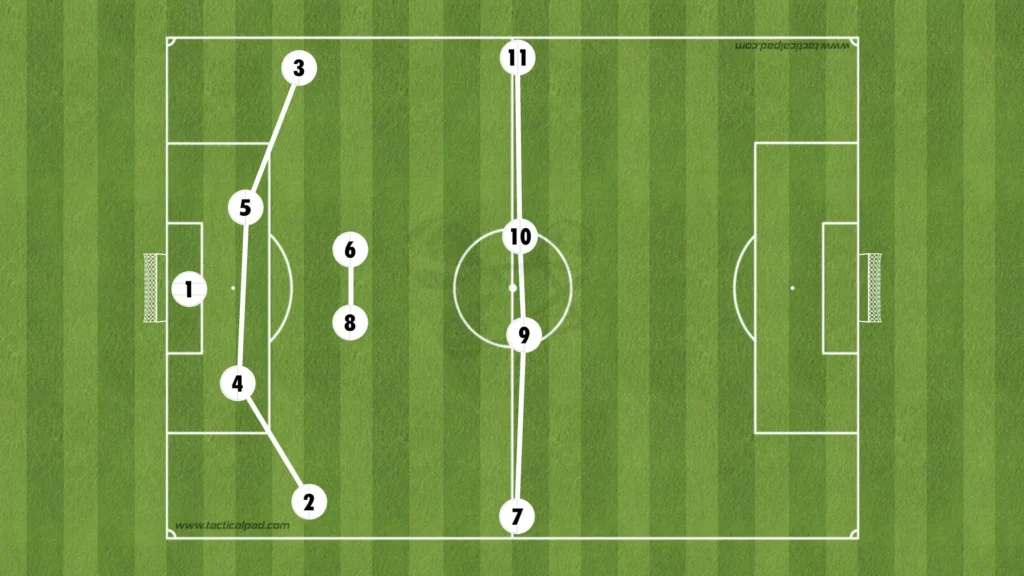
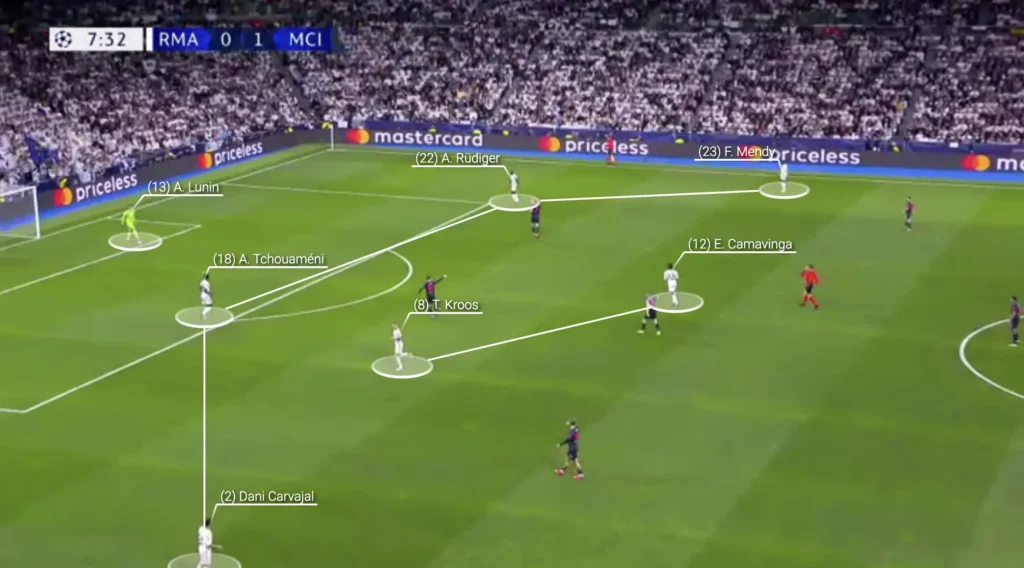
Bellingham would often drop in Real’s low build-up. This gave Real Madrid more options in their build-up phase while attracting a Man City defender, which opened up more space for the quick Real attackers up top.
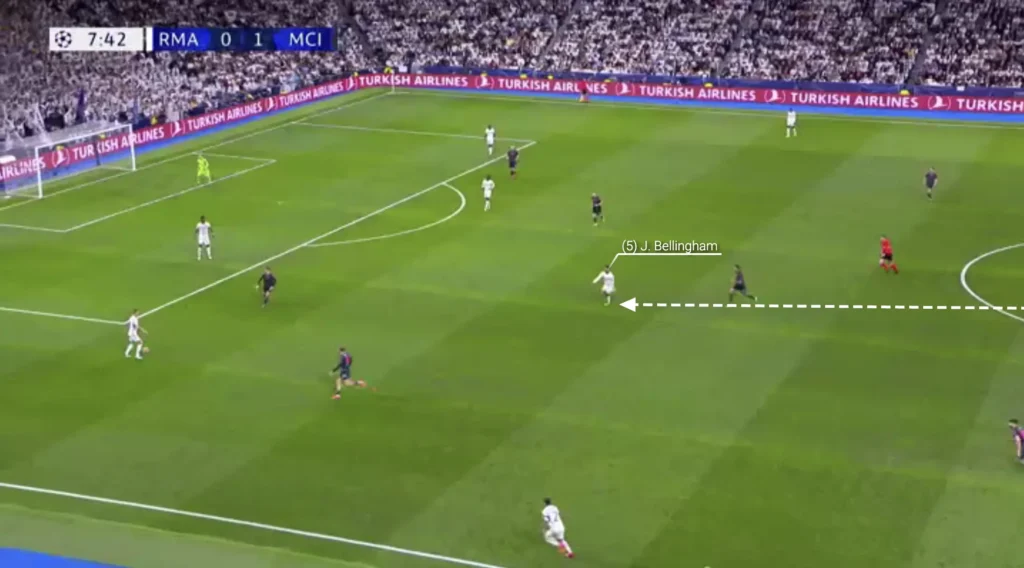
High Build-up
In the high build-up, Real Madrid would rotate into a 1-2-3-5 formation, mainly by pushing Carvajal up, Mendy in, and positioning Valverde, Bellingham, and Vinicius Jr between the backline and midfield-line of Man City.
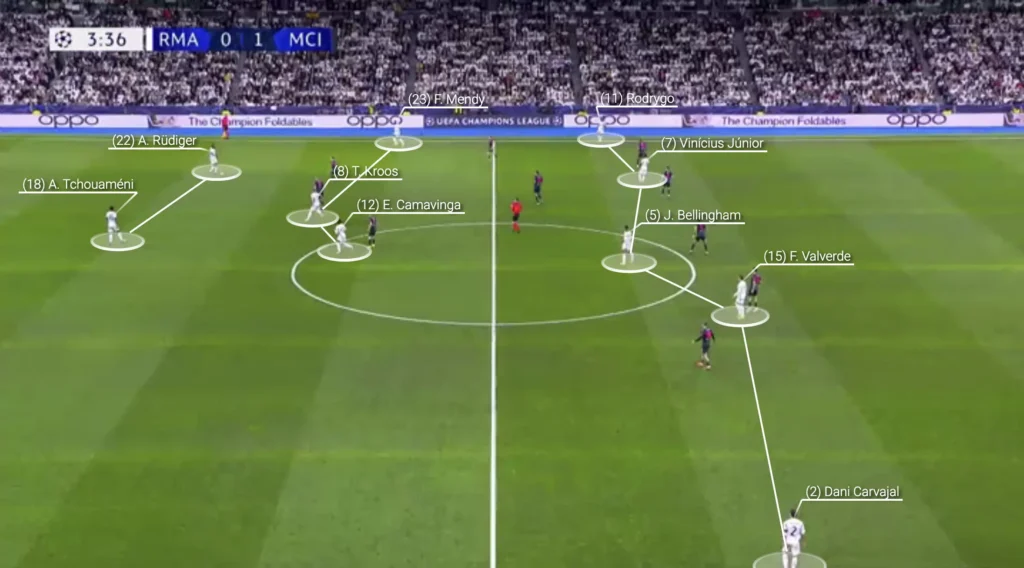
Rodrygo and Vinicius Jr would both be on the left wing when Real had the ball high up the pitch. They looked to work together, trying to beat City’s defense and create chances by creating 2v1 situations against Manuel Akanji, City’s right-back.
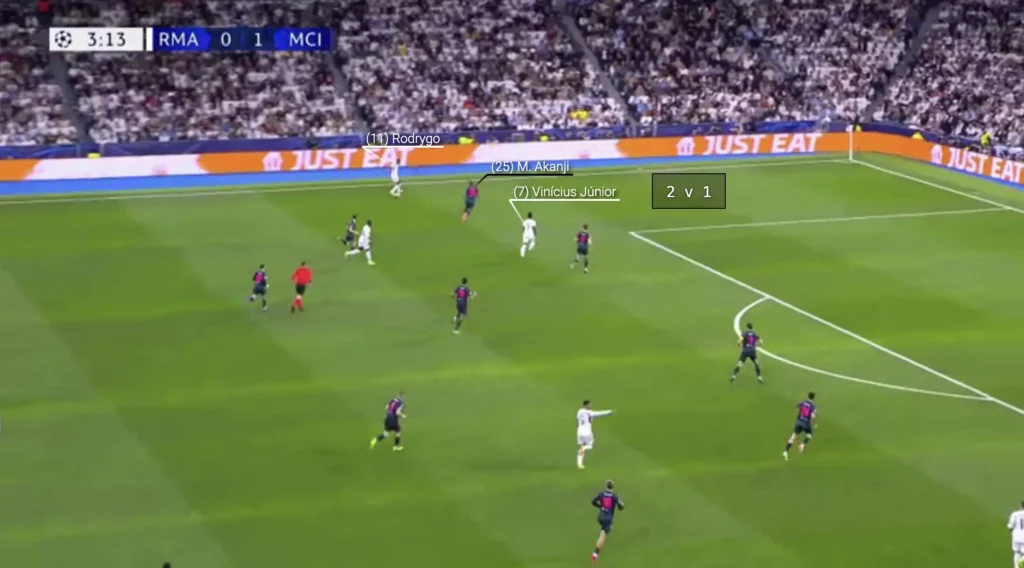
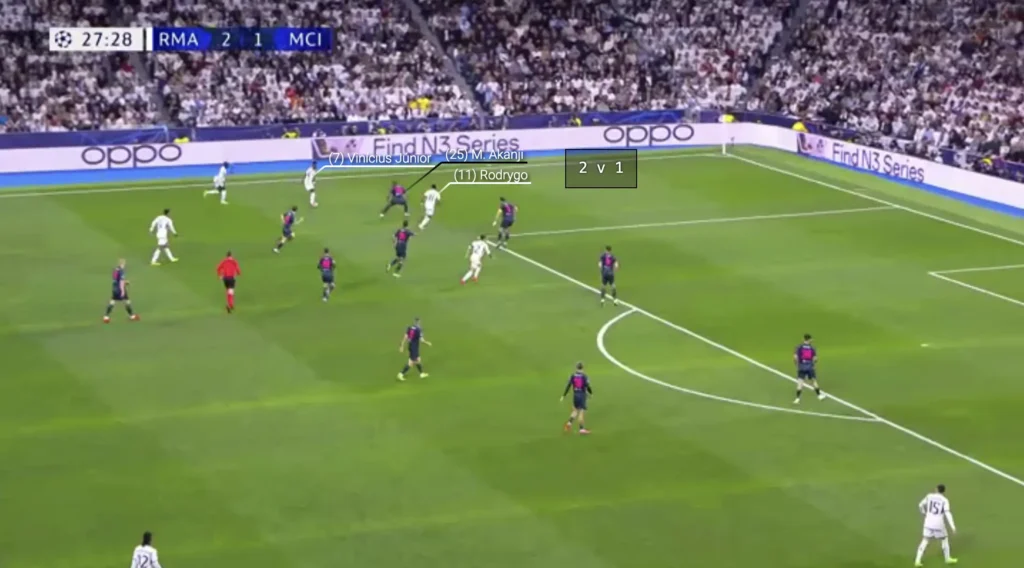
Rodrygo and Vinicius would mainly exploit their 2v1 against Akanji by playing the ball in behind him and beating him with their pace. Real’s second goal comes from this. Vinicius Jr played the ball into the space behind Akanji for Rodrygo to run onto. Rydrygo won the sprinting race, took the ball into the box, and scored with a simple placement finish.
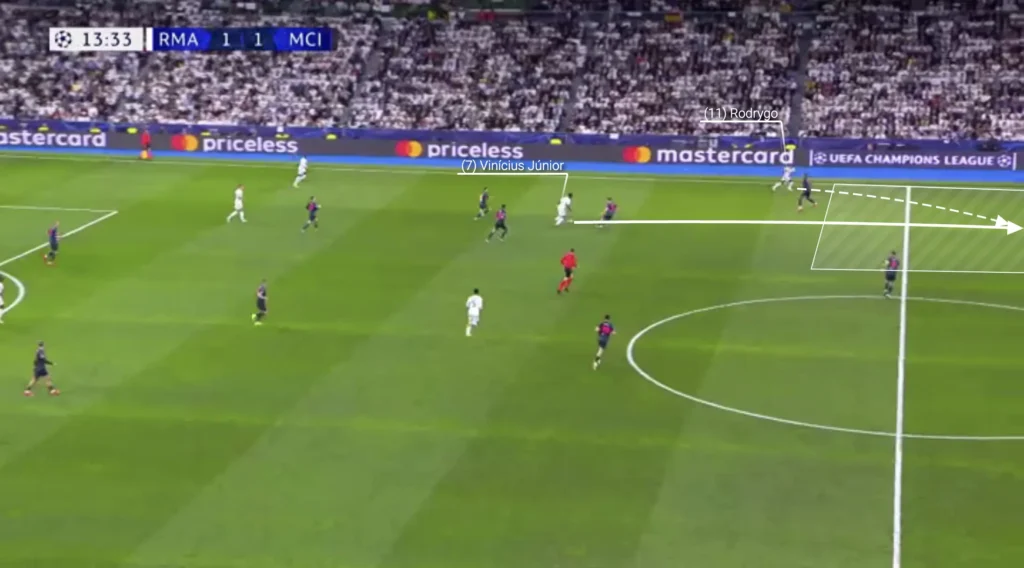
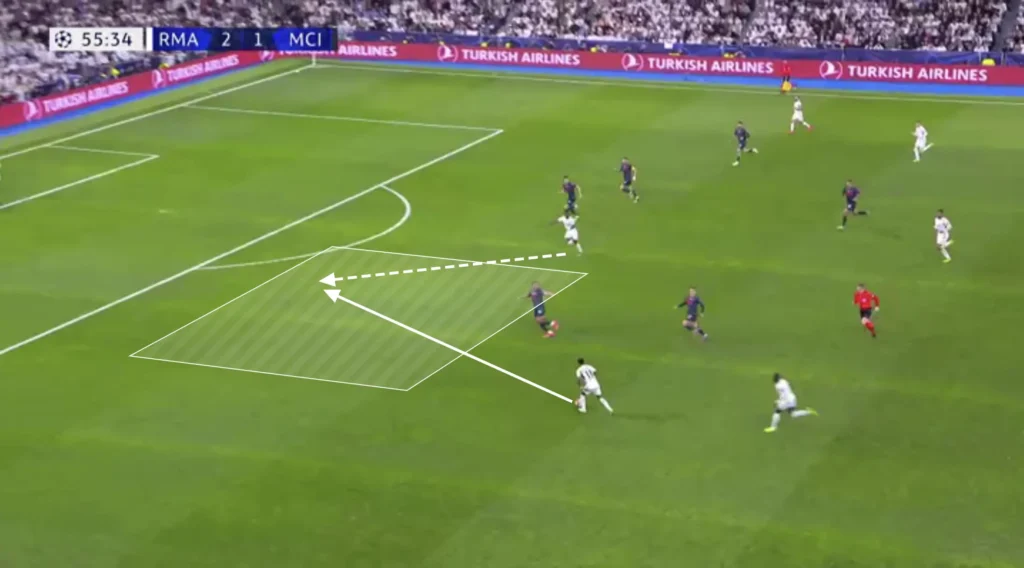
Defending
Real Madrid used a 1-4-4-2 formation when defending. They looked to set up in a mid to low-block, always trying to stay compact while closing the center, pushing Man City out wide. Bellingham and Vinicius Jr played as strikers with little defensive responsibility, which forced the wide midfielders, Rodrygo and Valverde, to work extra hard to cover the central spaces.
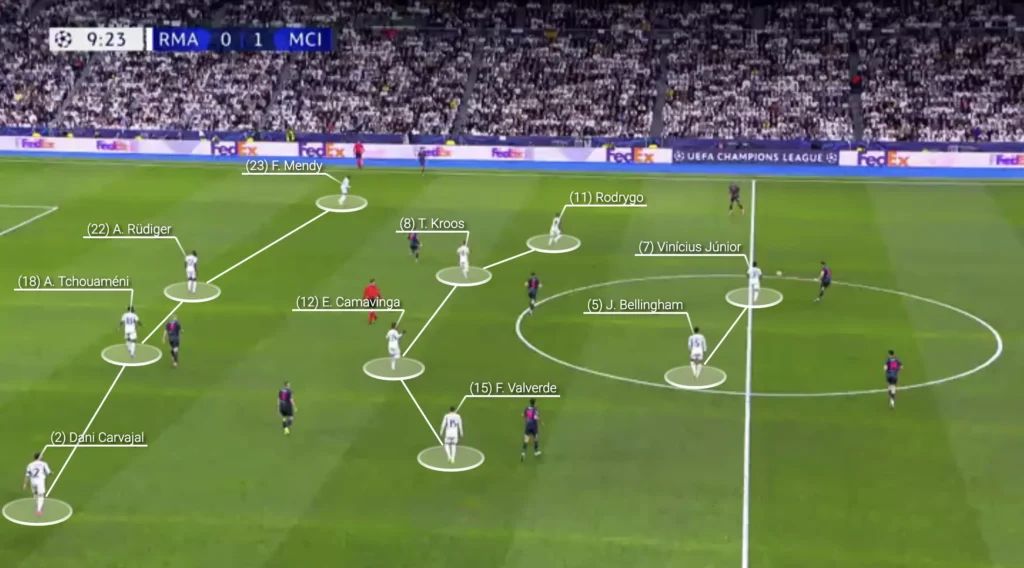
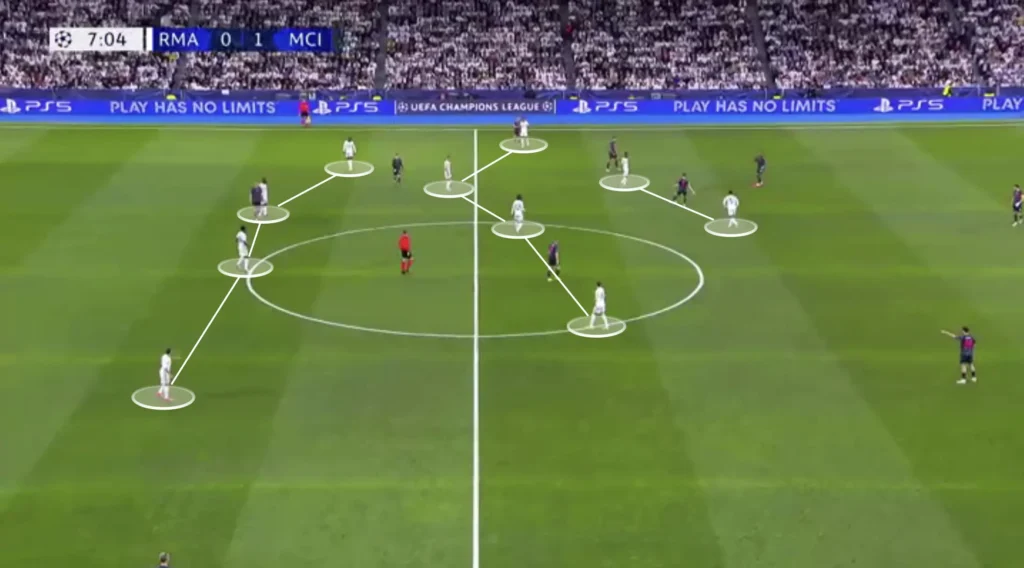
Man City often pushed Real Madrid back through their patient possession. Real’s backline and midfield could become very deep, which opened the spaces outside the box. Man City exploited these spaces in the second half, scoring two goals from long shots outside the box.
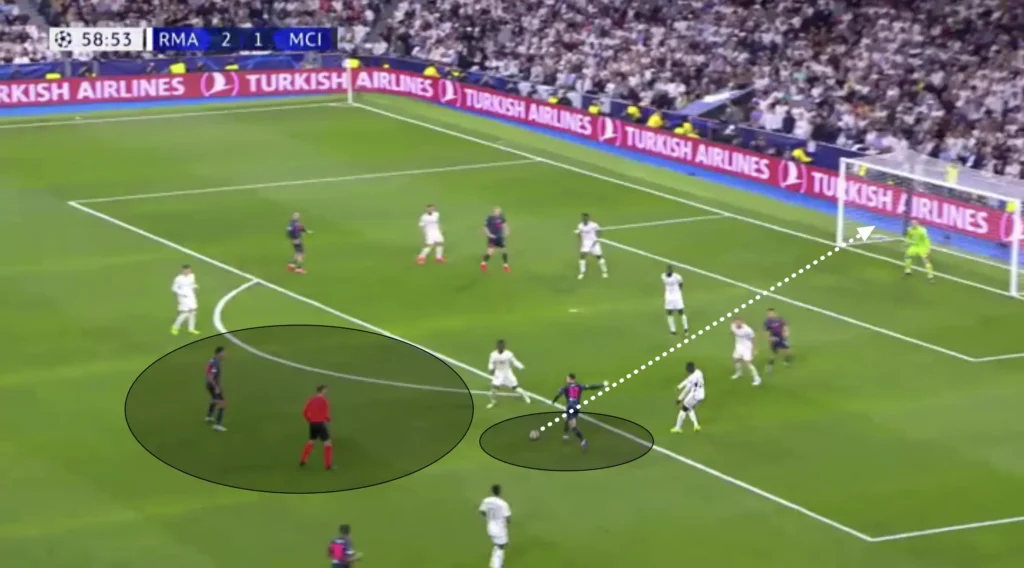
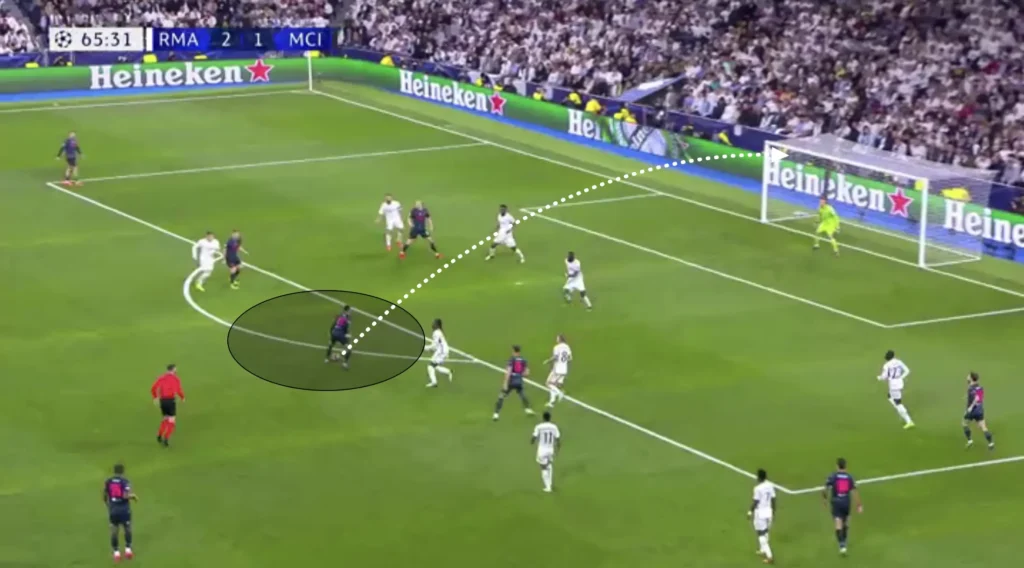
Attacking Transitions
Real Madrid would counterattack in their offensive transitions. They did this with a high tempo, often attacking the spaces between the center-backs and fullbacks. Their quick forwards make them deadly in the counterattacks, constantly causing issues for opponents. In addition, keeping their best counter-attacking players, Rodrygo and Vinicius Jr, close to each other when defending enabled them to work together more in the counterattacks.
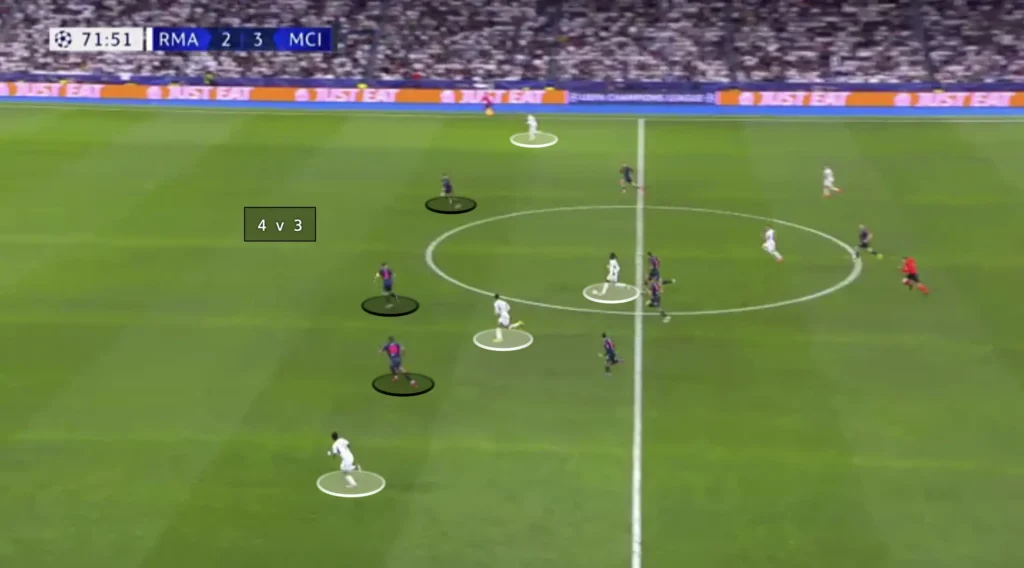
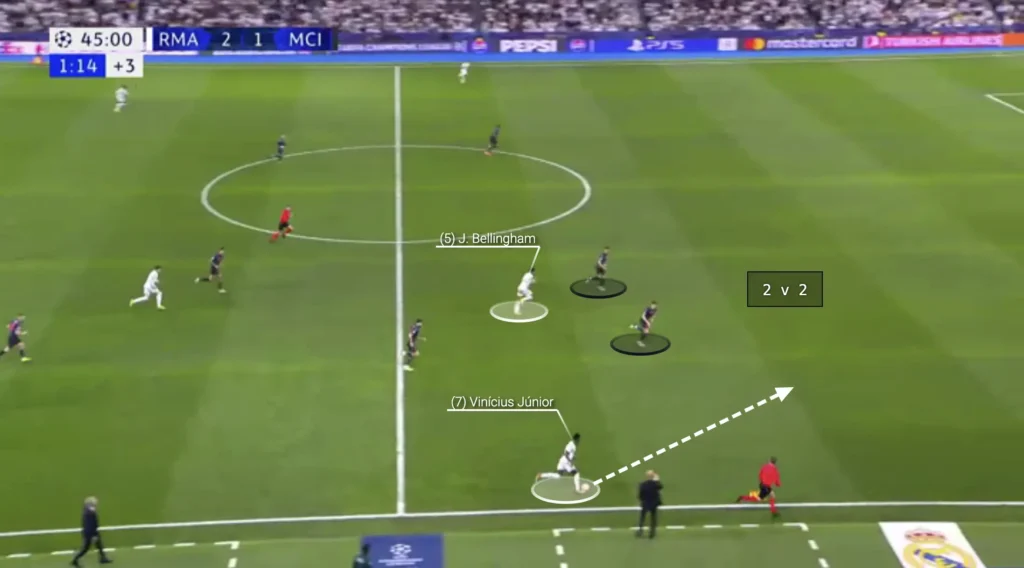
Man City
Low Build-up
Man City used a 4-2-5 formation in the low build-up, with the goalkeeper playing between the center-backs and a box midfield in the middle. This meant they were numerically superior in the midfield, often allowing them to beat Real’s press and progress the ball up the pitch.
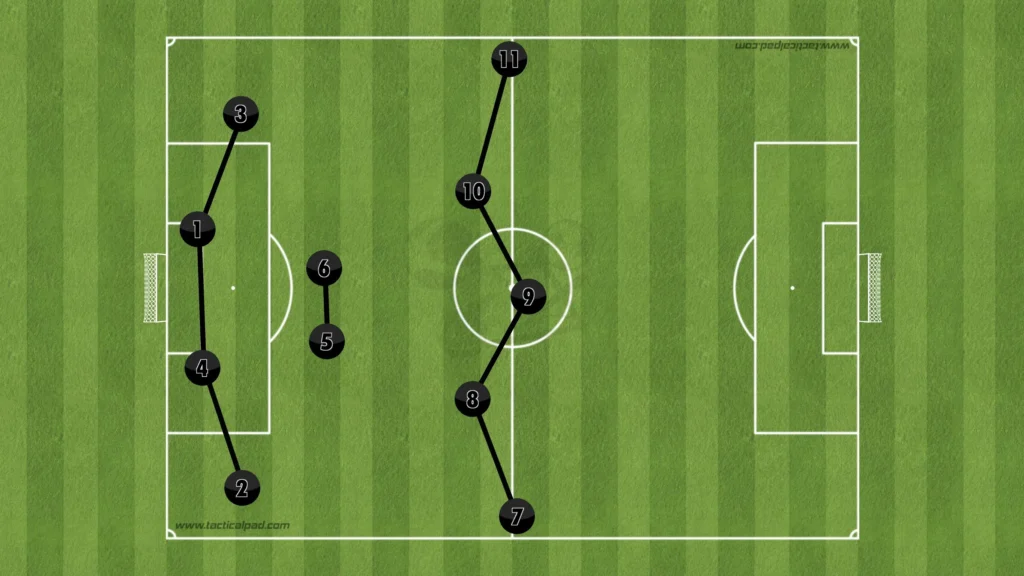
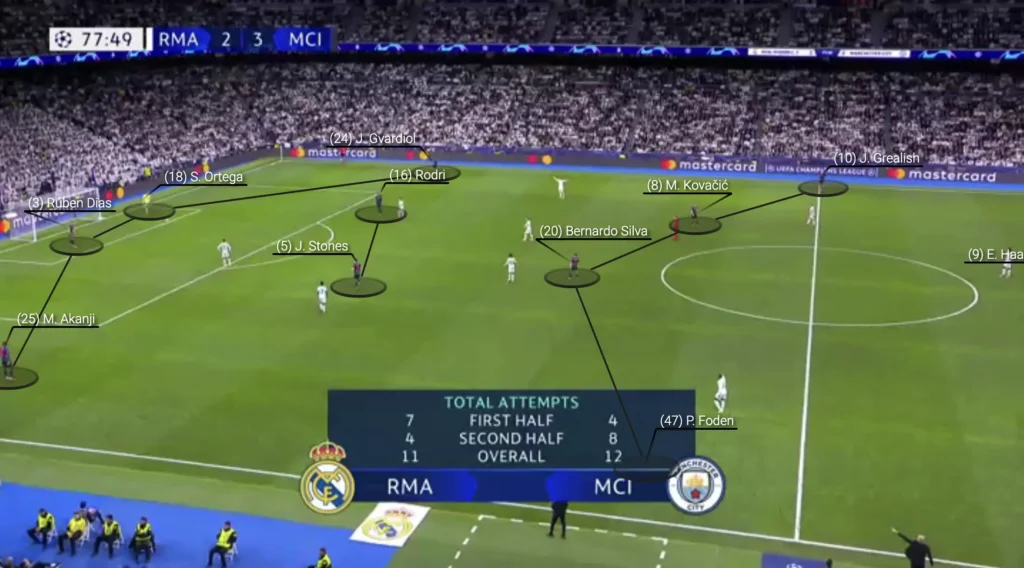
Haaland would be very high when Ortega had the ball, which gave City the option to go long if Real’s press became too much. He would be in a 1v1 against Rüdiger, often winning the duel, enabling City to begin their development higher up.
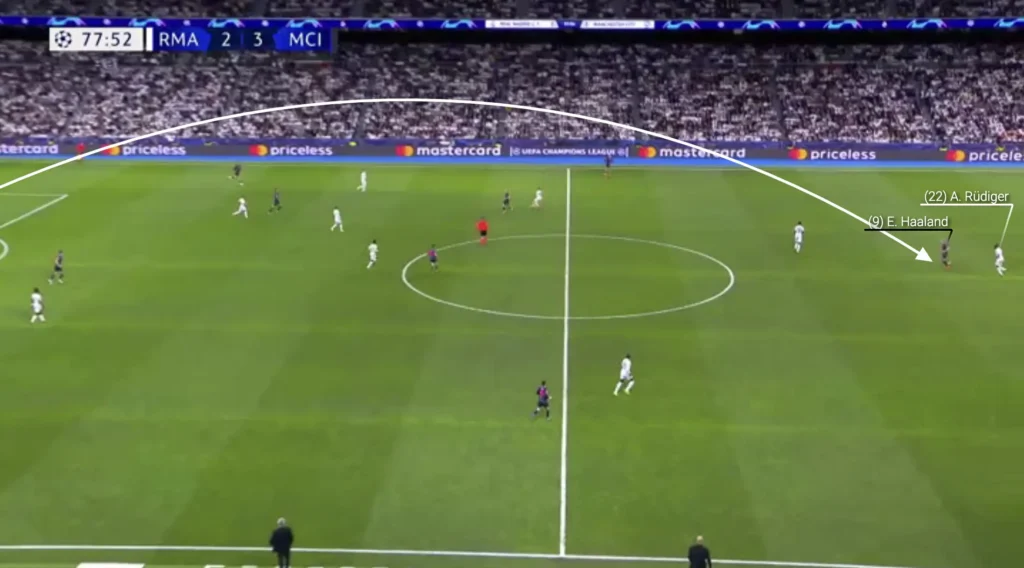
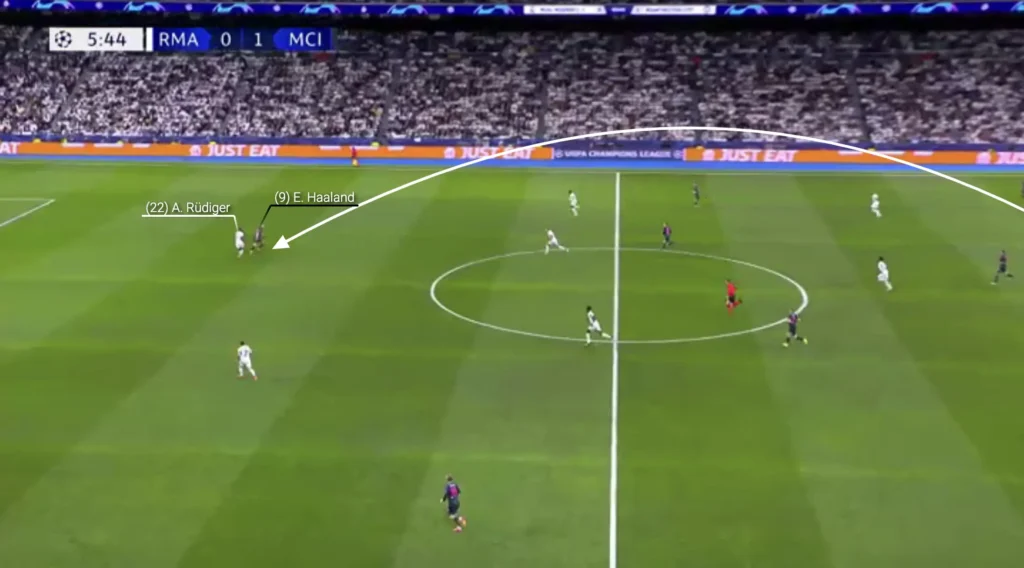
High Build-up
In the high build-up, Pep Guardiola’s Man City set up in a 1-3-2-5 formation, the same as in the low build-up without the goalkeeper between the center-backs:
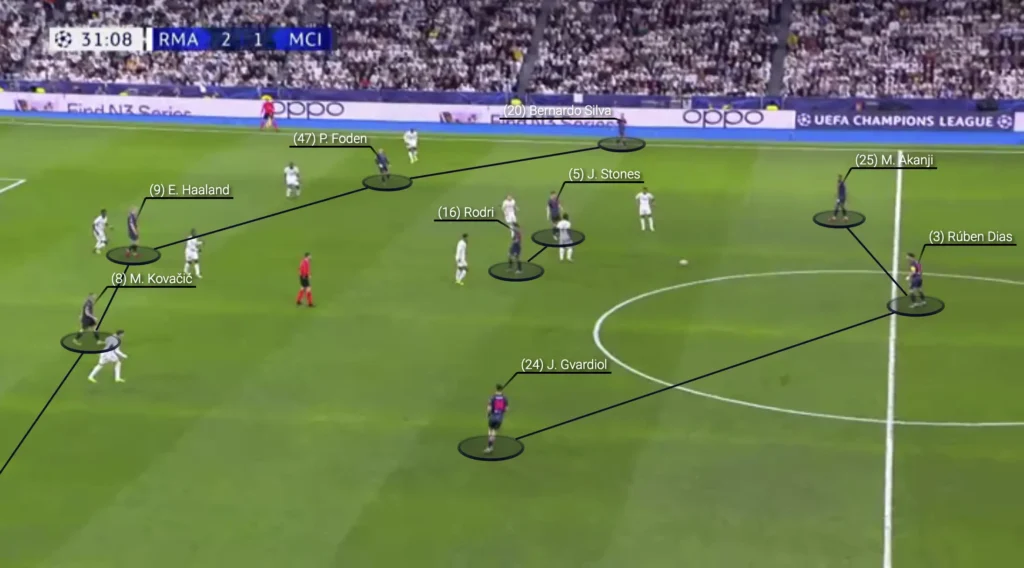
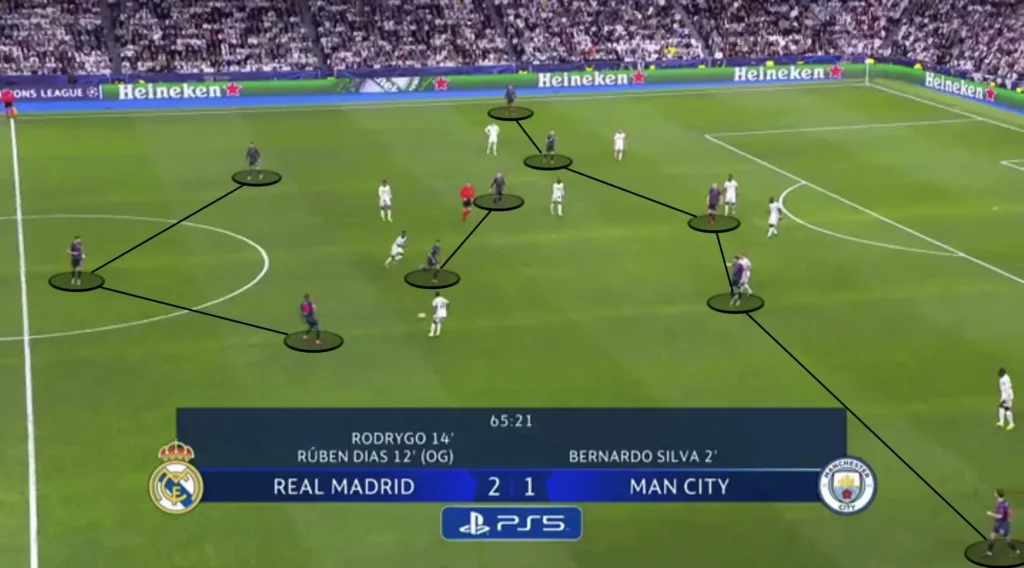
City would patiently break down Real Madrid’s defenses, looking for the optimal moment to unlock the Madrid lines. This possession-focused approach allowed them to control the game’s rhythm while wearing the Real players down, giving Guardiola’s team more energy later in the game.
High press
Man City looked to press Real Madrid whenever they could and did so successfully during the game. They would go into a man-man system and press with high intensity, often forcing Real to go long.
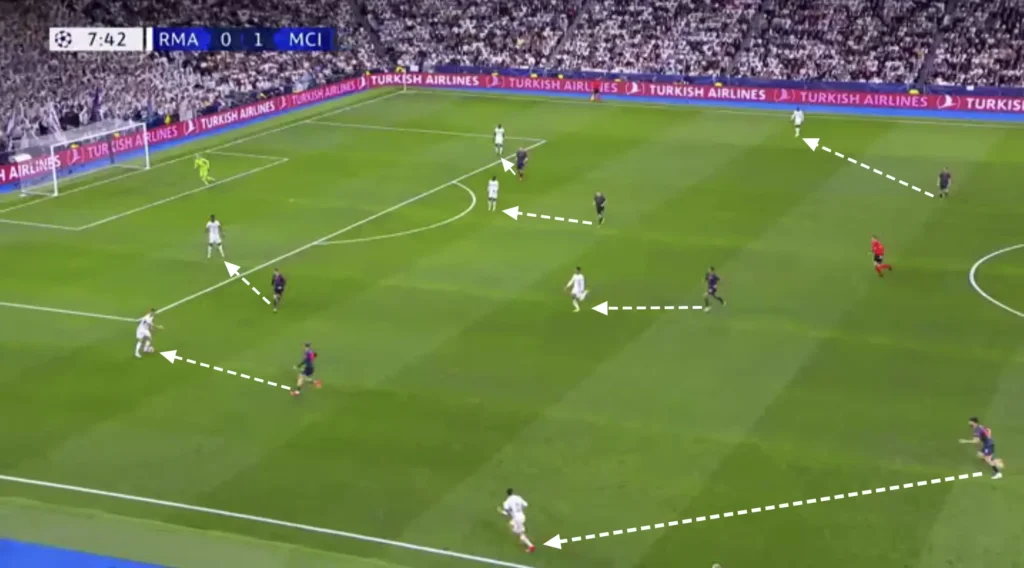
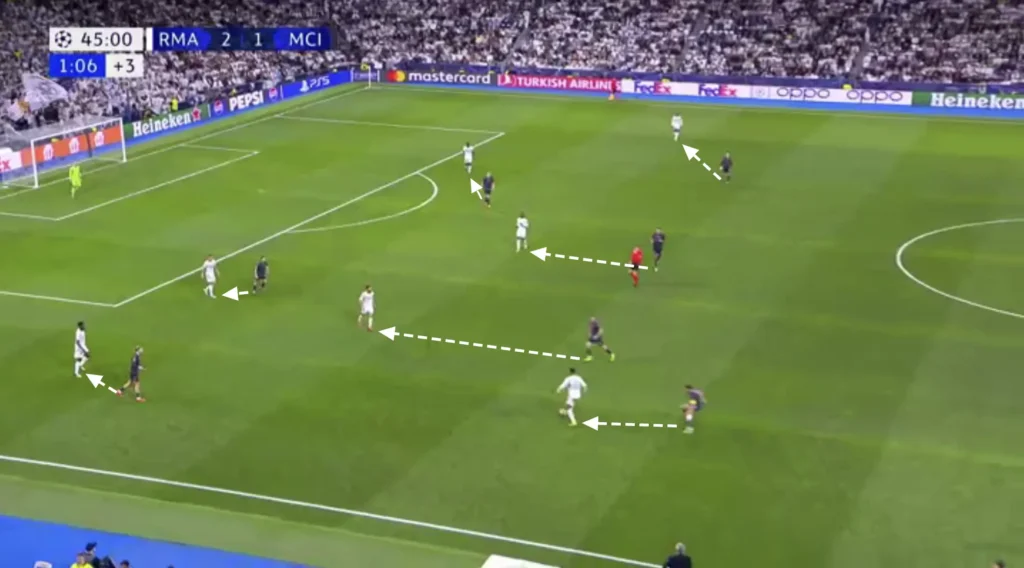
Low Press
Man City used a 1-4-5-1 formation when defending. They looked to set up in a mid to low-block, always trying to stay compact while closing the center, forcing Real Madrid out wide.
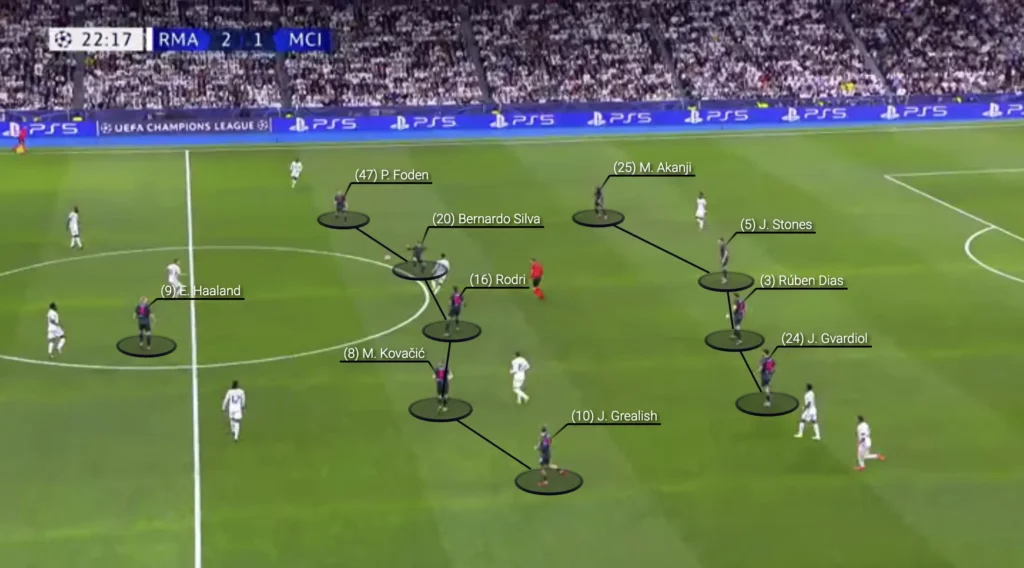
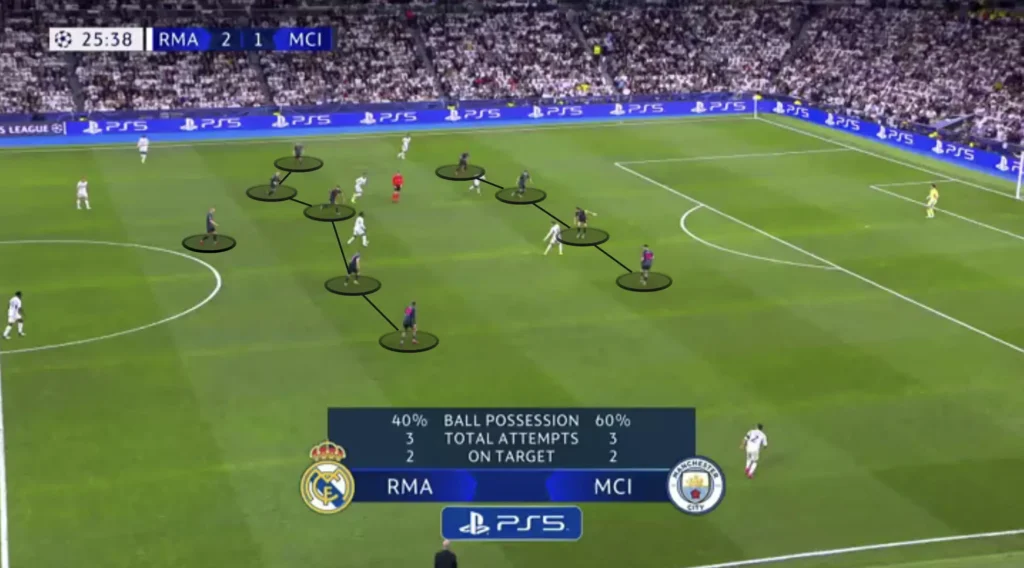
Man City also looked to squeeze the pitch when Real Madrid had the ball. This means constantly pushing the team up as much as possible when defending. Every time Real played a slow, sideways pass or a back pass, City’s first line of pressure would push up, with the rest of the team following to stay compact. When the next pass came, they pushed up even more, forcing Real Madrid back even more.
Final Thoughts
The tactical battle between Real Madrid and Manchester City showcased the contrasting styles and tactics of the two top-tier footballing giants. Real Madrid’s disciplined defensive structure and clinical counterattacks posed a formidable challenge to Manchester City’s possession-based approach. Conversely, Manchester City’s relentless pressing and intricate build-up play tested Real Madrid’s defensive resolve. This analysis highlights the nuances of both teams’ tactics, illustrating the dynamic nature of elite-level football and the strategic decisions that ultimately shape the outcome of such high-stakes encounters.

Really good tactical analysis of the game, but I miss a little bit the individual analysis such as why Rodrigo played on the left and not Vinicius, and why Haaland was not relevant on Man City attacks, as well as what Guardiola changed on second half to have more spaces on the center and creating more chances for the skyblues than they did on the first half. But it can be such a long analysis so I think you did a good job with this general tactical analysis for this game. Congratulations.